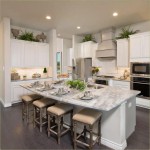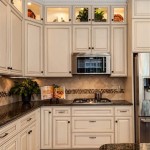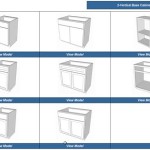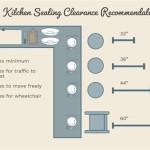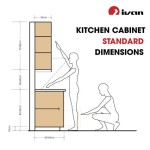```html
The Enduring Appeal of Vintage Oak Kitchen Cupboards
Vintage oak kitchen cupboards represent a significant period in American furniture design, reflecting a focus on durability, practicality, and aesthetic appeal. These cupboards, often dating from the late 19th century to the mid-20th century, offer a unique blend of robustness and timeless style that continues to resonate with homeowners today. Their enduring popularity stems from several key factors, including the inherent qualities of oak wood, the craftsmanship involved in their construction, and their ability to seamlessly integrate into both traditional and contemporary kitchen environments.
Oak, as a material, possesses remarkable qualities that made it a preferred choice for kitchen furniture. Its density and hardness provide exceptional resistance to wear and tear, crucial in the high-traffic and demanding environment of a kitchen. The grain pattern of oak is also highly desirable, offering a visually appealing texture that can range from subtly elegant to boldly expressive, depending on the cut of the wood. Furthermore, oak accepts a variety of finishes exceptionally well, allowing for customization and restoration to match diverse aesthetic preferences. Unlike softer woods, oak is less prone to denting and scratching, ensuring that vintage oak cupboards can withstand the test of time with minimal maintenance.
Vintage oak kitchen cupboards were typically constructed using solid wood, a stark contrast to many modern cabinet offerings that rely heavily on engineered wood products. This solid wood construction contributes significantly to their longevity and structural integrity. Joinery techniques, such as dovetailing and mortise-and-tenon joints, were employed to create strong and durable connections, ensuring that the cupboards could support significant weight and resist racking. The drawers were often crafted with meticulous attention to detail, featuring smooth-gliding mechanisms and sturdy bottoms capable of holding heavy items. This emphasis on quality craftsmanship is a hallmark of vintage oak cupboards and a key reason why they are highly sought after.
The design of vintage oak kitchen cupboards often reflects the prevailing styles of their respective eras. Early examples, dating from the late 19th century, may exhibit Victorian influences, with ornate carvings, raised panels, and decorative hardware. As styles evolved, the designs became more streamlined, reflecting the influence of the Arts and Crafts movement and the subsequent embrace of simpler, more functional aesthetics. By the mid-20th century, oak cupboards often featured clean lines, flat panels, and minimalist hardware, aligning with the modernist sensibilities of the time. This stylistic diversity allows homeowners to find vintage oak cupboards that complement a wide range of architectural styles and interior design schemes.
Durability and Longevity of Oak as a Cabinet Material
The inherent durability of oak is arguably the primary reason for the lasting appeal of vintage oak kitchen cupboards. Oak's high density and hardness make it exceptionally resistant to the everyday wear and tear that kitchen cabinets are subjected to. Spills, bumps, and scratches are less likely to cause significant damage to oak compared to softer wood species. This resilience translates into a longer lifespan for the cupboards, allowing them to be passed down through generations with proper care. The structural integrity of oak also contributes to its longevity. Its ability to withstand heavy loads and resist warping ensures that the cupboards remain functional and aesthetically pleasing for many years.
Furthermore, the grain pattern of oak plays a role in its durability. The tight grain structure helps to prevent moisture penetration, which can lead to warping, swelling, and rot. This is particularly important in the humid environment of a kitchen. The natural oils present in oak also provide a degree of resistance to pests and decay. While oak is not completely immune to these issues, it is significantly more resistant than many other wood species commonly used in cabinet making. The combination of density, hardness, grain structure, and natural oils contributes to oak's exceptional durability and longevity, making it an ideal material for kitchen cupboards designed to withstand the test of time.
The ability to refinish oak is another key factor in its longevity. Over time, the finish on oak cupboards may become worn or damaged. However, oak can be easily sanded down and refinished to restore its original luster. This ability to refinish allows homeowners to keep their vintage oak cupboards looking their best for many years to come. Refinishing also provides an opportunity to change the color or sheen of the finish to match evolving aesthetic preferences. This versatility makes oak a sustainable choice, as it allows homeowners to avoid replacing their cabinets simply because they no longer like the color or finish.
Craftsmanship and Construction Techniques
The craftsmanship involved in constructing vintage oak kitchen cupboards is another defining characteristic that sets them apart from many modern cabinet offerings. Prior to the widespread adoption of mass production techniques, cabinet makers relied on skilled handcraftsmanship to create high-quality furniture. This meticulous attention to detail is evident in the joinery, the finishing, and the overall construction of vintage oak cupboards. Techniques such as dovetailing, mortise-and-tenon joints, and hand-planing were employed to create strong, durable, and aesthetically pleasing pieces.
Dovetailing, a technique used to join drawer boxes and other components, is a hallmark of quality craftsmanship. Dovetail joints are incredibly strong and resistant to pulling apart, ensuring that drawers can withstand heavy loads and frequent use. Mortise-and-tenon joints, another common technique, are used to connect frame members and create rigid structures. These joints involve inserting a projecting tenon into a corresponding mortise, creating a strong and interlocking connection. The precision and skill required to create these joints are a testament to the expertise of the cabinet makers who crafted vintage oak cupboards.
The finishing techniques used on vintage oak cupboards also reflect a high level of craftsmanship. Hand-rubbed finishes were often applied to enhance the natural beauty of the wood and provide a durable protective layer. These finishes were typically formulated using natural oils and waxes, which penetrate the wood and create a warm, rich patina. The application of these finishes required patience and skill, as multiple coats were often applied and carefully buffed to achieve a smooth, even surface. The resulting finish not only protected the wood but also enhanced its natural grain and character.
Integration into Modern Kitchen Designs
Despite their age, vintage oak kitchen cupboards can be seamlessly integrated into modern kitchen designs. Their timeless aesthetic and inherent versatility make them a valuable addition to both traditional and contemporary spaces. When incorporating vintage oak cupboards into a modern kitchen, it is important to consider the overall design scheme and select pieces that complement the existing architectural style and décor.
In traditional kitchens, vintage oak cupboards can be used to create a warm and inviting atmosphere. Their natural wood tones and classic designs blend seamlessly with other traditional elements, such as farmhouse sinks, butcher block countertops, and vintage-inspired hardware. The addition of vintage oak cupboards can add character and charm to a traditional kitchen, creating a space that feels both comfortable and stylish. The use of period-appropriate accessories, such as vintage canisters and enamelware, can further enhance the traditional aesthetic.
In contemporary kitchens, vintage oak cupboards can provide a striking contrast to sleek, modern elements. Their natural texture and grain can add warmth and visual interest to minimalist spaces. When incorporating vintage oak cupboards into a contemporary kitchen, it is important to select pieces that have clean lines and simple designs. Pairing vintage oak cupboards with stainless steel appliances, quartz countertops, and minimalist hardware can create a sophisticated and visually appealing contrast. The juxtaposition of old and new can add depth and personality to a contemporary kitchen, creating a space that feels both modern and timeless.
The versatility of oak as a material also allows for customization and adaptation to suit modern kitchen needs. Vintage oak cupboards can be modified to accommodate modern appliances, such as dishwashers and refrigerators. Shelving can be adjusted or added to maximize storage space and improve functionality. The finish can be updated to match the overall color scheme of the kitchen. By carefully selecting and adapting vintage oak cupboards, homeowners can create a unique and personalized kitchen that reflects their individual style and preferences.
```
Wood Mode Kitchens From 1961 Slide Show Of 15 Photos Retro Renovation

A Family Rebuilds And Res 1953 Kitchen To Its Former Glory Retro Renovation

Antique Oak Kitchen Cabinets 1920 S Vintage Ers Mastercraft Cabinet Wi Farmhouse Design

7 Charming Old House Details Making A Comeback Antique Kitchen Cabinets Design Renovation

10 Antique Kitchen Cabinets That Ll Inspire You To Thrift

Reclaimed Oak Lumber Antique Finish Kitchen Cabinets Rustic

Diy Staining Oak Cabinets Eclectic Spark

Wood Mode Kitchens From 1961 Slide Show Of 15 Photos Retro Renovation

Vintage Kitchen Cabinets Decor Ideas And Photos Cabinet Styles

For Those Who Kept Their Old Kitchen Cabinets Pics

